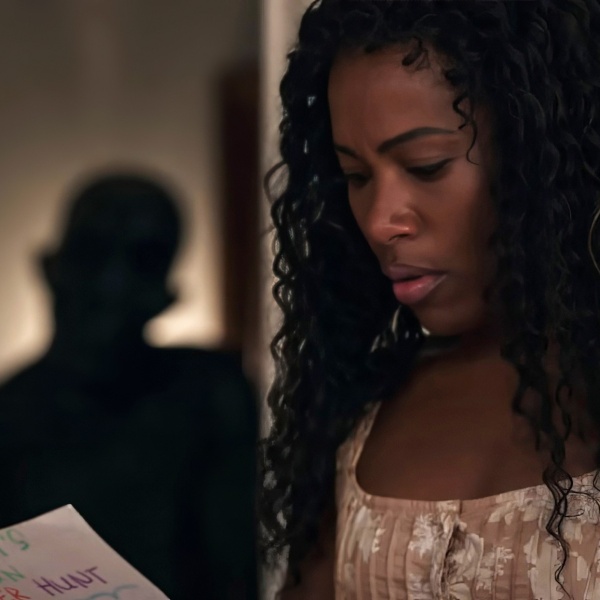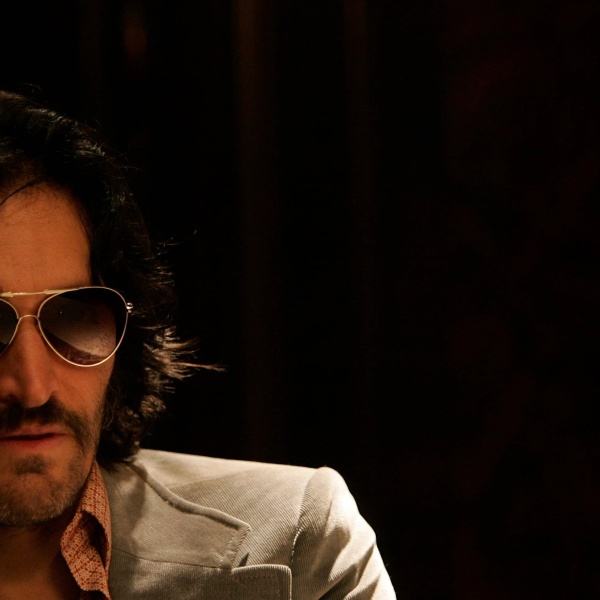“You’re listening to a guy who learned a lot about ripping off movies from watching laserdiscs with director commentary,” says Paul Thomas Anderson at the beginning of his “Boogie Nights” DVD commentary, acknowledging something many of us learned in the early days of the Criterion Collection back in the late 1980s and early ‘90s: Listening to filmmakers talk about craft as their movie unspools is one of the best ways to start thinking like a filmmaker.
Of course, not all commentaries are created equal, and for every P.T. Anderson or Martin Scorsese who is great at articulating their process, there are dozens of directors who fall back on the “so and so was great to work with” style of narration or merely describe the onscreen action. In the interest of saving you the time and aggravation that come with wasting hours on unworthy tracks, here are 25 of the best DVD commentaries from which to learn about filmmaking. With the exception of Steven Soderbergh (who is represented here multiple times thanks to his willingness to appear on other directors’ commentaries as an interviewer) and Peter Bogdanovich (who also appears on a commentary for a film not his own), I’ve limited each filmmaker to one appearance on the list — but since most people are either good at commentaries or not, you can assume that if someone is on this list, all of their DVDs are worth checking out.

“Taxi Driver” (Sony) In 1990, Martin Scorsese and Paul Schrader recorded the gold standard for commentary tracks, a shot-by-shot visual and thematic breakdown of their work on “Taxi Driver” for the Criterion laserdisc release. That laserdisc is long out of print, but the commentary is available on several of Sony’s DVD, Blu-ray, and 4K releases of the film, and it remains one of the best ways to start thinking like a filmmaker. The “Taxi Driver” commentary was just the beginning for Scorsese and Schrader, who together have recorded dozens of others, both for their own films and, in the case of Scorsese, for movies they love. (Scorsese’s commentary on the Criterion edition of Michael Powell’s “The Life and Death of Colonel Blimp” is an indispensable delight.) Taken together, the collected commentaries of Scorsese and Schrader serve as a viable alternative to film school, one as entertaining as it is informative.

“The Graduate” (Criterion) If you want to learn how to think about finding visual and aural corollaries for a script’s themes and emotions, UCLA film professor Howard Suber’s audio commentary for this 1967 landmark is a fantastic place to begin. His narration skillfully dissects how director Mike Nichols and his team use decor, lenses, light, costumes and more to convey the title character’s state of mind in every scene; the relationship of those scenes to each other is also brilliantly explored in Suber’s razor-sharp analysis of the underlying screenplay’s structure. The Criterion disc features a second commentary by Nichols in conversation with Steven Soderbergh, who does a terrific job of extracting useful information from the director on his guiding principles and influences (from “Persona” to “A Place in the Sun”) and how he applied them. In terms of the amount of useful information per minute, these two commentaries are tough to beat.

“Boogie Nights” (New Line) Paul Thomas Anderson stopped recording commentary tracks after the two he laid down for this, his second feature, and it’s a shame because few directors are as infectiously enthusiastic and inspiring when talking about their work. Anderson’s solo commentary is jammed to the hilt with revealing insights into his thought process, while a second commentary in which he riffs on the movie with various cast members is hilarious, candid, and gives a great indication of the kind of environment Anderson created on set to facilitate the greatest ensemble acting in the history of American film.

“Following” (Criterion) Christopher Nolan had no money with which to make his 1999 debut feature, but he used the resources he did have — time, talent, and creative freedom — brilliantly, creating a riveting contemporary noir that introduces several of the themes and techniques that would characterize later Nolan films like “Memento” and “Inception.” His DVD commentary focuses specifically on how he overcame his limitations by doing things like blocking the action near windows (to save on lighting), staging conversations on rooftops (to get urban exteriors without permits or sound problems), and rehearsing for six months so that the actors could get in and out of stolen locations quickly with one or two takes.

“Citizen Kane” (Criterion) Orson Welles’ debut film is still the textbook when it comes to learning visual storytelling, and it’s rich enough to easily justify the three commentary tracks on this disc — all of them loaded with perceptive analyses of Welles’ techniques. Filmmaker Peter Bogdanovich, critic Roger Ebert, and Welles scholars James Naremore and Jonathan Rosenbaum provide six hours of material on how and why Welles did what he did and what it means both for “Citizen Kane” and film history as a whole, and there isn’t a wasted or dull minute to be found. If you’re a newcomer to Welles, this disc provides a fantastic crash course. If you’re a Welles fanatic, Naremore and Rosenbaum’s observations in particular will inspire you to look at the director in general and this film in particular in a new way.

“The Counselor” (Fox) Ridley Scott’s best movie (sorry, “Blade Runner!”) also has his best commentary track, though this is much more than a typical audio commentary. The narration is interspersed with video featurettes that interrupt the movie at various points to take the viewer deep inside the making of the film, creating a 186-minute viewing experience that scrutinizes Scott’s filmmaking process from every possible angle. Scott’s commentary and the accompanying featurettes are filled with astonishing revelations — most notably that this film set in the American southwest was shot entirely in Spain and London for tax purposes (the fact that it’s utterly convincing is a testament to the genius of Scott and his crew) — and Scott’s justified enthusiasm for the film is as engaging as his insights are vital.

“Pan’s Labyrinth” (Criterion) This is a typically enthusiastic track from director Guillermo Del Toro, who is thankfully as knowledgeable as he is passionate and as generous with that knowledge as any director this side of Scorsese. His narration takes the viewer through every step of his filmmaking process from conception and structure to influences and visual design, and he’s especially adept at illustrating how all of these elements relate to the themes of his story. Del Toro is as entertaining a verbal storyteller as he is a visual one, which is really saying something — and which makes this commentary 110 minutes of pure pleasure.

“Grace of My Heart” (Scorpion) Allison Anders’ 1996 musical represented a huge leap in ambition and scale for the writer-director following her earlier, exquisitely crafted character studies (“Gas Food Lodging,” “Mi Vida Loca”), but her sensibility survived the transition from independent film to the studio system and yielded one of the great American films of the decade. It wasn’t easy though, and on this commentary track, Anders talks about the many challenges of trying to mount a pop epic on what was, relative to what she was trying to achieve, a modest budget. There’s a lot of gold here on topics like the complex process of creating the film’s songs, working with actors to create depth in limited spaces, recreating 1960s New York in Los Angeles, getting producer Martin Scorsese to shoot inserts, and much more.

“Out of Sight” (Kino Lorber Studio Classics) Asking a commentary enthusiast to choose their favorite Steven Soderbergh disc is a little like asking a parent to choose their favorite child, but it’s hard to do better than this articulate and witty track shared with screenwriter Scott Frank on the movie that moved Soderbergh from the margins to the center of film culture. “Out of Sight” is a kind of movie miracle, an alchemic blend of the right people at the right time that produced a dazzling mix of romantic comedy and crime caper that’s both highly idiosyncratic and smoothly accessible. Soderbergh’s description of how he threaded the film’s challenging tonal needles in a way that made the movie look effortless — at the very moment when the director was under the most self-imposed pressure of his career — is fascinating, and the abundance of great production stories make this a commentary worth returning to again and again.

“Love & Basketball” (Criterion) Gina Prince-Bythewood’s 2000 debut is both a poignant, complex love story and a powerhouse sports movie with some of the most expertly staged basketball scenes ever put on film (no coincidence given that the story had its roots in Prince-Bythewood’s own past as an athlete). On a pair of excellent commentaries, one alongside star Sanaa Lathan and the other shared with editor Terilyn A. Shropshire and composer Terence Blanchard, Prince-Bythewood communicates not only the fundamentals of shooting a great sports sequence but the delicate tonal balance her movie required, and how she solved the problems it raised both on the set and in the editing room.

“Se7en” (New Line) This disc contains four commentary tracks for the price of one, and each of them is expertly assembled and illuminating. The commentators dissect the film from a variety of perspectives: Brad Pitt and Morgan Freeman take a deep dive into the acting on one track, screenwriter Andrew Kevin Walker and others explore the story on another, and additional commentaries provide insights into the creation of the visual style and sound design. Director David Fincher appears on all four tracks alongside his collaborators and articulates his intentions with wit and clarity, giving the listener a crash course in the creation of a suspense classic from conception to test screening.

“Valley Girl” (Shout! Factory) In 1983, Martha Coolidge shot a teen comedy classic with a $350,000 budget and a 20-day shooting schedule; on this disc, she explains how. Coolidge fills her commentary with great stories about how fulfilling her financiers’ requirements without compromising her own intentions, clearly and concisely breaks down her approach to color and costumes, and offers tips on how to elicit great performances from your actors when you’ve got no time. The commentary is smart, funny, and warm, just like the movie and the director who made it.

“JFK” (Warner) Oliver Stone talks for a solid three hours on this commentary and fills every minute with compelling insights into his tactics as both writer and director on what was, in 1991, the most ambitious and audacious film of his career. Stone is so transparent about his motivations and so detailed in his descriptions of them that this is a great commentary track even if you’re one of the film’s detractors; for its admirers, this is a riveting analysis of how a modern American epic came to be, conveyed with a clarity that makes its lessons applicable even to much more modest productions.

“Menace II Society” (Criterion) The Hughes Brothers’ searing 1993 crime film was one of the most assured directorial debuts of its decade, and it hasn’t lost any of its power in the 30 years since its release. The robust, confident filmmaking style of twin brothers Albert and Allen, who were only 21 years old when “Menace” came out, is broken down element by element on a pair of excellent audio commentaries: Allen focuses largely on the performances, story, and sound design, while Albert weighs in on the camerawork and editing. Both brothers are extremely clear about the choices they made and why they made them, resulting in a clinic in visual storytelling that’s aided by a third supplementary feature, a selected-scene commentary by cinematographer Lisa Rinzler.

“True Romance” (Arrow). Quentin Tarantino doesn’t contribute audio commentaries to the movies he directs, but he recorded one for “True Romance,” in which his sensibility as a screenwriter is filtered through the spectacular eye of director Tony Scott. It’s a great commentary too, exuberant and inspiring and exhaustive in its history of the script and movie’s evolution. Scott gets his own commentary track as well, as do stars Patricia Arquette and Christian Slater, but the jewel of Arrow’s special edition is a fourth commentary by novelist and film critic Tim Lucas that adroitly delineates the ways in which the intersection (collision?) between Tarantino and Scott’s voices resulted in a film that Lucas convincingly claims planted the seeds for much of what was to follow in American cinema for the next 20 years.

“High and Low” (Criterion) Akira Kurosawa is no longer with us to share his process, but he has a worthy advocate and proxy in the form of film scholar Stephen Prince, who has recorded commentaries for several Kurosawa classics and brilliantly breaks down the components of Kurosawa’s filmmaking style in each one. This epic thriller is one of the best examples of Kurosawa’s genius when it comes to widescreen framing, and Prince delineates exactly how and why the director made the choices that he did, explaining where Kurosawa positioned his multiple cameras and which lenses he used to achieve his effects. Prince is also very good at analyzing Kurosawa’s editing and demonstrating why the length of his shots is so appropriate for the visceral impact he’s trying to achieve.

“Bram Stoker’s Dracula” (Sony) Francis Ford Coppola’s visually sumptuous and thoroughly original cinematic take on the classic novel is a treasure trove of cinematic tricks, and Coppola and collaborators Roman Coppola (who directed the second unit and created many of the film’s most inventive special effects) and Greg Cannom (who created Gary Oldman’s Oscar-winning makeup) explain how they did all of them in an instructive and lively commentary. The disc also features an additional solo commentary by Coppola that’s great for inspiring outside-the-box thinking, as the director talks about creating the production design through costumes rather than sets, utilizing optical techniques from the silent era and German expressionism rather than modern visual effects, and consulting with a magician and gymnasts about how to capture as much of the surreal action as possible in-camera.

“The Piano” (Criterion) In telling a story with a woman who doesn’t speak at its center, writer-director Jane Campion emphasized all of filmmaking’s non-verbal components — particularly light, color, and music — and created a gorgeous and immersive classic in the process. On the DVD commentary, Campion and producer Jan Chapman delve into every aspect of the production, from casting and logistical challenges to using composition, lenses, and music to find visual and aural corollaries for the ideas in the script. Campion and Chapman are particularly instructive on the topic of actors, as they explore working with child performers and how to reconcile their lack of experience with that of the veterans.

“He Said, She Said” (Paramount) This inventive 1991 rom-com presents its story twice, with the half told from Kevin Bacon’s perspective directed by Ken Kwapis and the half told from Elizabeth Perkins’ vantage point helmed by Marisa Silver. (The movie ends with a final act that’s a sort of “they said” to wrap things up.) The result is a unique opportunity to explore how camera position, lenses, and editing can be used to express point of view, and the commentary track by Kwapis, Silver, screenwriter Brian Hohlfeld, and cinematographer Stephen Burum does a nice job of outlining the differences, both subtle and obvious, between the film’s two primary sections. There’s also some great material here on framing and why shooting in Cinemascope is the right choice for an intimate romance, how lighting can be used to make the audience fall in love with or turn against a character, and the calculus behind planning versus spontaneity on set.

“Harlan County, USA” (Criterion) The challenges and pleasures of documentary filmmaking are vividly illustrated by director Barbara Kopple and editor Nancy Baker on this track, which delves into both technical matters and the question of how documentarians earn the trust of their subjects. Kopple and Baker are particularly attentive to issues relating to music and sound and provide useful insights into how they structured their material to balance the story’s personal, political, and historical components. Kopple is open about the pressures she was under and the immense struggles when it came to financing, but she’s equally transparent about the deep and profound joy that making the movie gave her — especially when it ultimately found the audience that it deserved. The upshot is a commentary as stirring and straightforward as the film it accompanies.

“Hostel: Part II” (Sony) The greatest American horror film of the 2000s yields a spirited commentary track from writer-director Eli Roth, who breaks down the ways in which he applied influences both expected (Italian giallo cinema) and surprising (the “Harry Potter” franchise!), explains how practical effects and CG are best combined, and lays out how to structure suspense both on the page and in the visual style for maximum impact. On a second audio track, Roth is joined by executive producer Quentin Tarantino and second unit director Gabriel Roth, who supply even more fascinating details about the making of the film and background on many of the other participants, and a third commentary provides the actors’ perspective courtesy of Lauren Germain, Vera Jordanova, and Richard Burgi. In addition to the wealth of filmmaking material here, Roth delves into the implications of making a film about capitalism and torture post-9/11, providing great food for thought on the topic of smuggling one’s personal preoccupations — political and otherwise — into the framework of a down and dirty genre film.

“The Lone Gunmen: The Complete Series” (Fox) This “X-Files” spin-off was one of the most criminally underseen and short-lived series ever to grace the airwaves, with some heavyweight filmmaking talent behind the camera: One of its creators was “Breaking Bad” and “Better Call Saul” maestro Vince Gilligan; the visual style was established in the pilot by “Game of Thrones” and “Ray Donovan” cinematographer Robert McLachlan; and almost half the episodes were directed by Bryan Spicer, one of the most dynamic helmers in episodic TV. All three, along with several other collaborators, are featured in multiple commentaries that are must-listens for anyone interested in creating great art within the network television system; though the show is over 20 years old, its lessons are evergreen.

“The Yards” (Imprint) Another disc that gives you two commentaries for the price of one, both fantastic. On one track, director James Gray talks with Steven Soderbergh, who’s every bit as good at drawing out insights into Gray’s process as he was Mike Nichols’ on the “Graduate” commentary, and on the other, Gray provides a solo narration in which he drills down into his choices in more detail. Both commentaries are excellent considerations of the endlessly challenging intersection between aesthetic and practical considerations that must be properly calibrated every day on a film set.

“The Verdict” (Fox) This 1982 courtroom drama from director Sidney Lumet and screenwriter David Mamet is one of the great character studies of its era, a profound and moving story of a con man’s redemption that earns every one of its emotionally powerful moments. Lumet’s audio commentary describes both the creation of Paul Newman’s complex character and Lumet’s way of using all the visual tools at his disposal to externalize his protagonist’s internal pressures. From controlling the color palette by using autumnal colors (to convey the sense of a man living in the past) to surrounding the character with majestic architecture to show what he’s up against and casting supporting actors whose inherent truthfulness would stand in stark relief to Newman’s character’s dishonesty, Lumet’s choices in “The Verdict” are unerring, and he expounds upon all of them on this disc.

“Targets” (Criterion) Peter Bogdanovich’s 1968 debut is a lesson in bending a financier’s orders to one’s own ends, as he took a series of random instructions from producer Roger Corman (shoot two days with Boris Karloff, use 20 minutes of footage from another Karloff film Corman owned, etc.) and managed to execute them while figuring out how to benefit from his limited resources. Bogdanovich’s commentary track is a treasure trove of lessons on how to shoot both artistically and economically, with particular emphasis on what he learned from veteran directors like George Cukor, Samuel Fuller, and Alfred Hitchcock, whom he met during his apprenticeship as a journalist. It’s an essential commentary from Bogdanovich, one of the most eloquent of all directors when it comes to explaining his choices and how he implemented them.







